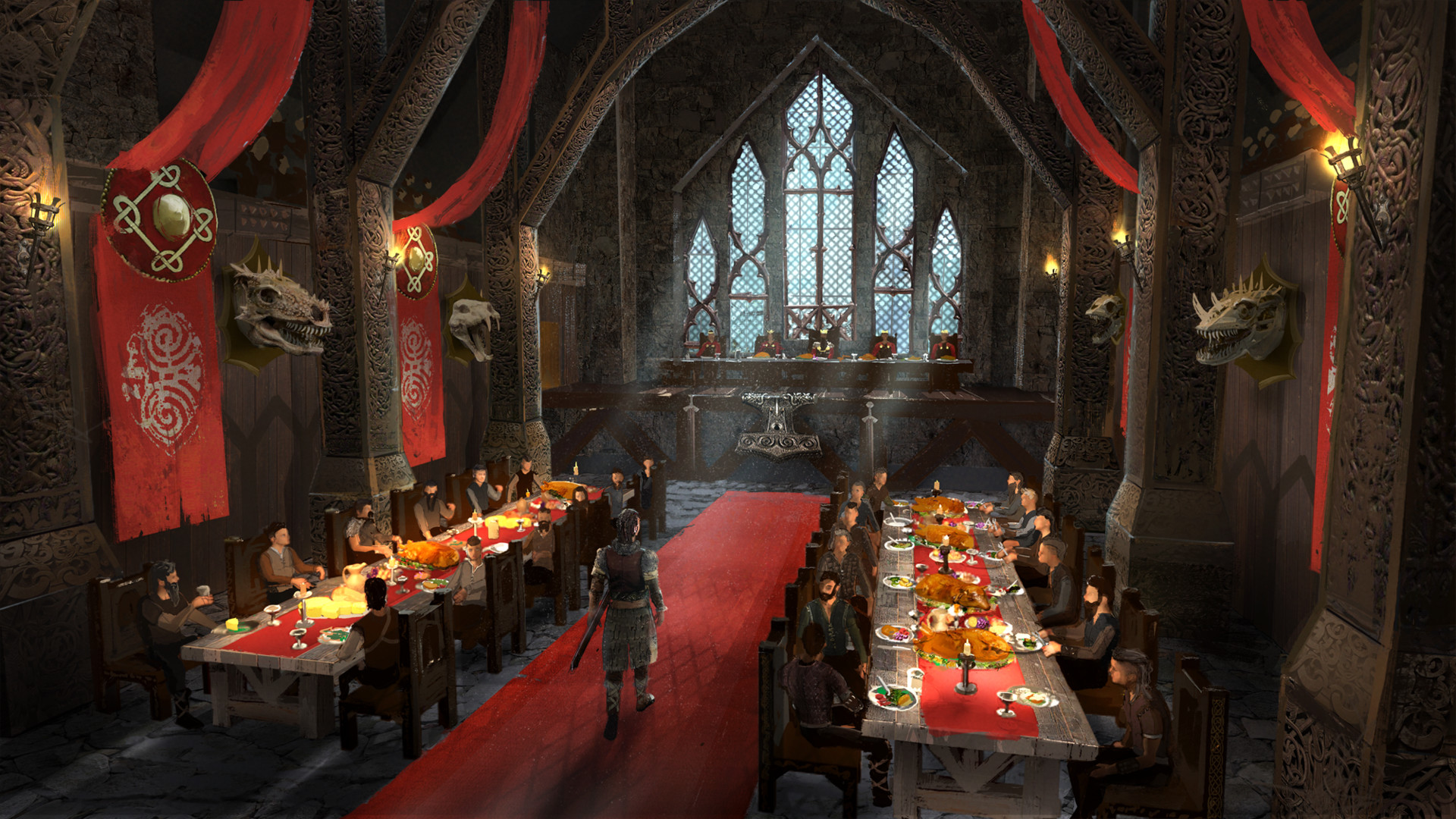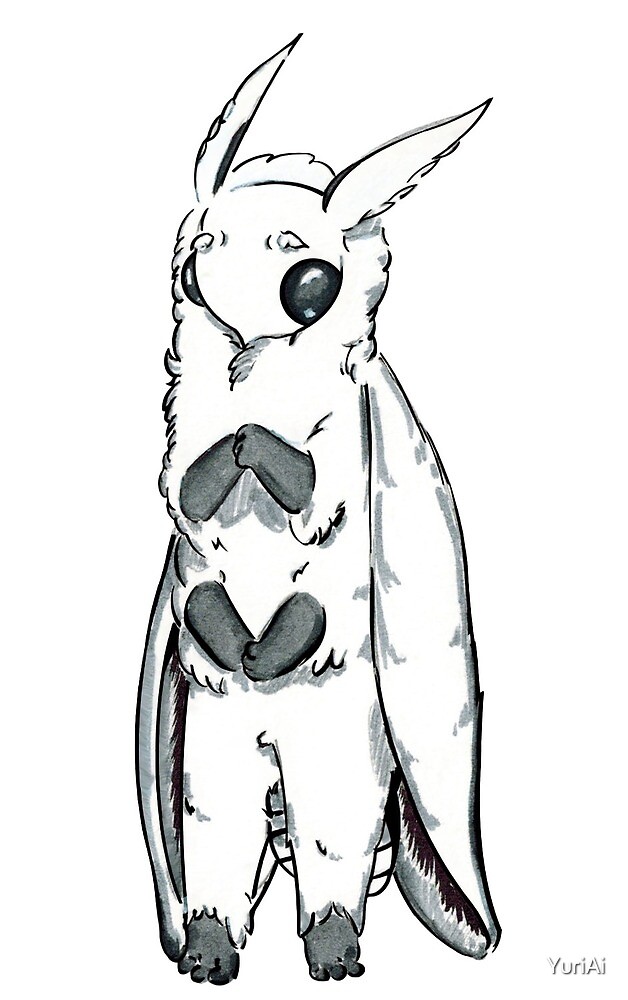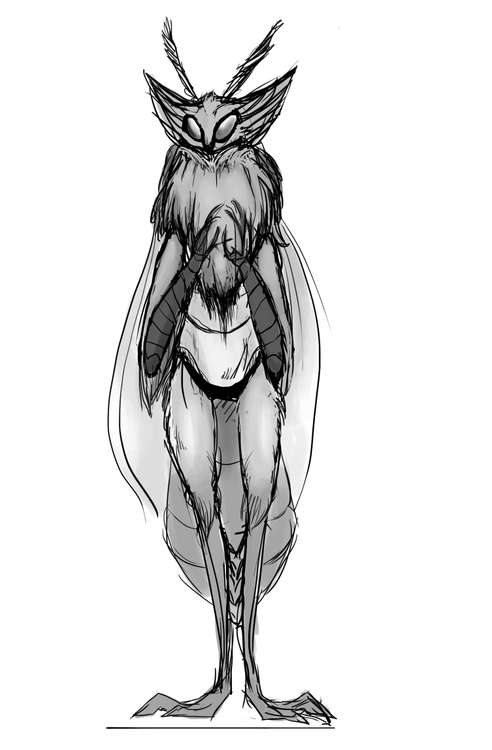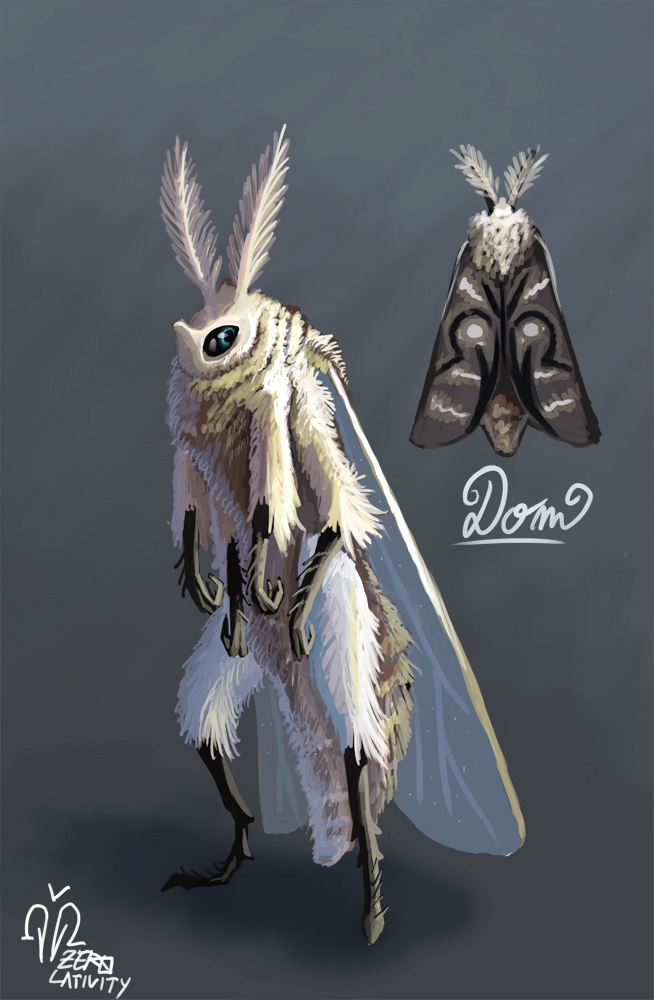Update
4/7/22
Map upodated.
The magic system has been expanded on in order to make sure all forms of magic have at least a brief explanation.
A new teacher,

Name: Throndrout Grimbrew
Race: Dwarf
Age: 196
Gender: Male
Appearance: Throndrout Grimbrew stands at just above 4' tall with the wide powerful build often associated with dwarves. He is almost seen in a leather apron with out any sort of shirt as it "Gets to damn hot!" for a shirt. He is almost always wearing goggles of some kind and has a tendency to carry what looks like an average blacksmiths hammer with him wherever he goes. His long beard is usually braded and adorned with gold of some fashion. He is balding slightly and his hair and beard are starting to gray as he ages. There are almost always scorch marks on his beard and eyebrows from some experiment going awry.
Class: Artificer (He makes things using runic magic and Alchemy.)
Personality: Few would ever doubt Throndrout's brilliance. Some may doubt if the Dwarf is sane or not. He can be grouchy, loud, and a little scary at times, but few have the passion for knowledge and creation that Throndrout has. If you can manage to get past his gruff demeanor and the constant stream of cussing that he spews, you might find that Throndrout is a fantastic teacher who will go out of his way to help his students. Just don't challenge him to a drinking contest. You'll probably get alcohol poisoning.
Biography: Throndrout rarely talks about his past, and the rest of the staff tends to keep tight lipped about it as well. The only information he has ever given is that his decision to leave the Iron Keep and come to Hoseforn's in order to pursue to craft was met with a great deal of strife. Still, the aging dwarf has been teaching at Hseforns for some 20 years now and his contributions to the further development of both alchemy and artificing can not be denied. He was the first to discover the concoction he lovingly refers to as "Blow your ass up powder"; usually shortened to boompowder by his students.
In his years at Hoseforn he has taught countless students, he has also been known to black a few of their eyes or crack a few of their ribs if they did something truly stupid. It is unclear if Throndrout actually LIKES teaching or not, but he has a tendency to get results. For those students he takes a particular he has been known to create a special weapon for them. These items are usually one of a kind and incredibly effective when they don't blow up.
4/17/22
-Lepikari added to races of interest


Overview
North of the All Tree, shrouded by the fog and growth of the forest live a rare race of man collectively called the Lepikari, or more simply, the Mothfolk. The Lepikari have long lived in the forest for just barely over a century, and their origin is mysterious, even to themselves, however, it is commonly believed by their priests and mages that they were set on this world to be a force of balance among the other races. These claims are highly disputed by long ranking scholars as their presence has only recently been noticed just over fifty years ago.
Biology
When the Lepikari are in their youth to early adult hood, they tend to be shorter than the average man, but as they mature, their height can be near 7 foot tall. Lepikari have a wide wingspan, making them capable of swift flight, although they prefer bipedal travel and use flight only when necessary. While it is unknown why, Lepikari have one major difference between one another aside from basic appearance, that being that some possess four arms, while others only have 2. While most Moth Folk are white in fur, they often do come in a wide range of colors and patterns, the more exotic colors being of younger generations. They are omnivorous and will generally munch on anything they consider food.
Lifestyle
Living separated from society for so long, the Moth Folk are very technologically behind. Most of their labor is by hand and rarely by magic as they have not reached full realization of their powers yet.
The Lepikari live in a cottage core styled village sprawled with differing sizes of cabins, cottages, and tents. Many of the houses were adopted from the style of men and elf, however with the limited resources the Moth Folk have, they look more natural and earthly. Schools are not present in the village, as parents are expected to teach their children everything they need to do, however there are sanctioned areas deeper in the woods where young mages can be taught how to harness their abilities.
History
The Lepikari were a solitary race who used their proficient knowledge in illusion, water, and light magic to lead any potential threat away from their land by shrouding the woods in a thick fog which tricks the traveler into returning the direction they came or getting lost. They had lived this way for nearly a century after finding their consciousness, sure that the outside world was scarier than anything that lived in the woods. They lived years considering outsiders as dangerous. They performed in a Gerontocracy where the elders lead the village.
It took nearly a century for the Moth Folk to branch out from their lands, when a young Moth woman named Gresia Wind-Wood convinced the village elders to allow her to form a small caravan to establish basic diplomacy with other races. They met many of the big nations, travelling first to the All Tree to visit the Elves and ended with the Dwarves.
Returning after near two months of travelling, the crew returned to the shrouded village to inform the elders what had been learned. They had made many friends during the trip and surely had established themselves as a race worthy of note. Gresia had managed to convince the elders to allow more caravans to form as an annual trip to ensure diplomacy. However, as their ranks grew, so did their thirst for knowledge and desire for advancement. Gresia started a chain reaction of events that lead the Lepikari as a more diplomatic/scholar centered race.
However, Gresia's great deeds did not grow without consequence. Since their discovery, many caravans of Moth Folk had been raided by bandits who stole their goods and imprisoned their people. The males were sold as a token slave, while the females were often sold into sex work. Despite the elders wishes, Gresia managed to continue her caravans for years, now using hired guards to defend their group.
Fifty years had passed and Gresia had established herself as an Elder easily after her amazing feats. She guides the village as the head leader, and continues her caravans, even at the age of 87. She promises to pass her legacy down to one of her grandchildren, however, many of them are showing their desire to leave the village...
Religion and Magic
While the Lepikari are not particularly the most technologically advanced and in touch with the world around them, they make up for it in intellect and magic. Many of their kind are proficient in what they refer to as "Moon-Magic", as what they are capable of performing is natural magic specifically limited to the properties of the moon, such as: Water, Plant, Light, Shadow, and certain branches of spirit magic.
As a result of this, they very religiously believe in the Goddess of the moon and worship her. Many believe she brought them to this world to be a counterbalance to the war and negativity in the world. A water to the blistering flame. These claims are not validated, however they are strong in a Moth Folk's belief.
-A new tab called cultures of interest added
-Pirates added to cultures of interest

The Pirates of Ealinata
In a world as diverse and wondrous as Ealinata it should be no surprise that pirates are an every day danger of sea travel. The pirates if Ealinata are no common bandits, however. The seas of Ealinata are dangerous, filled with monsters, demons, violent and sudden storms and other creatures that have developed to thrive in the harsh deep waters that surround the continent. Being a sailor is treacherous work, being a pirate is doubly so. It takes a great deal of strength, courage, and no small amount of insanity to survive.

________________Pirate Culture________________
“Above all else, I only sought the freedom to do whatever the hell I wanted. My only regret is that you caught me. Bastards.” - Pirate Lord Caelbal Thorn, moments before he was hung by East Balmmarian authorities.
It is likely that “culture” is not the first word that pops into your head when you think of pirates, however, the pirates who call Ealinata home are not simple murders and cutthroats; they are that too, but that isn’t all they are. Ealinatan pirates care little about ones gender, age or even what sort of monstrosity you are. Strength and cunning are the major determining factors in how good of a life a pirate lives. If you are strong enough to take what you want, when you want it, then you can count on the respect of your peers, as much good as that will actually do you.
A pirates crew is often like a family, with the captain acting as the head of the family, and the first mate acting as the eldest sibling that will smack the shit out of any misbehaving children. Mutiny is surprisingly rare on Ealinatan pirate ships, as any pirate that would betray their own family is seen as the lowest form of scum and seem to quickly disappear. Its is likewise very uncommon for pirates to truly fight among themselves. Though there are certainly disagreements over territory, a pirate values their own life and freedom above almost everything else, and so wont waste it on petty squabbles.
What many find surprising is that there are rumors of a hidden pirate city, where all ships that sail beneath the black flag can call home and find...relative safety.
A pirates crew is often like a family, with the captain acting as the head of the family, and the first mate acting as the eldest sibling that will smack the shit out of any misbehaving children. Mutiny is surprisingly rare on Ealinatan pirate ships, as any pirate that would betray their own family is seen as the lowest form of scum and seem to quickly disappear. Its is likewise very uncommon for pirates to truly fight among themselves. Though there are certainly disagreements over territory, a pirate values their own life and freedom above almost everything else, and so wont waste it on petty squabbles.
What many find surprising is that there are rumors of a hidden pirate city, where all ships that sail beneath the black flag can call home and find...relative safety.

___________________Location___________________
“Nice try Knave!” - Literally Any Pirate You Ask
It is common belief that pirates have a stronghold of some-sort hidden between the Akeza Jungle and the ruins of Old Balmaria. It has, however, never been found, nor its existence confirmed. Countless agents of Balmaria have searched the area only to come up empty handed, or mysteriously disappear. Some believe that there is powerful magic that hides the “home” of the pirates from interlopers, though many think its just as likely that any foolish enough to enter what is believed to be an entire city of pirates without invitation would surely meet a quick, gruesome death.

________________Pirate Lords________________
There are those among the pirates who become so powerful and feared that even other pirates steer clear of them. Most of them lead a small armada of ships, acting more as admirals then captains. These pirates become known as pirate lords. For most of recorded history there has been exactly 7 pirates lords at one time, each one ‘ruling’ a different part of the sea that surrounds Ealinata. Few know why there is only 7, as there are countless strong pirates who the layperson would think could take the title of pirate lord. Most believe that is comes from the way in which a pirate lord is ‘crowned’.
For a new pirate to take up the mantel of ‘lord’ a previous pirate lord must perish, which usually means they are killed. Battles for the title of ‘lord’ are often gruesome, bloody and short. The last battle for the title of lord took place 17 years ago, in which the former pirate lord Delanise ‘The Gray’, a drow woman who had made a fortune in the slave trade, was quite literally torn in half by her opponent, a pirate that would later be known as the ‘Red Demon of the Sea’. (All Pirate lords get weird nicknames, it comes with the territory.)
What exactly a pirate gets out of becoming a ‘lord’ is hard to say. Most think that it is the respect and fear that the title gives them that makes them seek it out, others believe that there is a more tangible reward. It is, in general, incredibly hard to get a pirate lord to talk about their title.
For a new pirate to take up the mantel of ‘lord’ a previous pirate lord must perish, which usually means they are killed. Battles for the title of ‘lord’ are often gruesome, bloody and short. The last battle for the title of lord took place 17 years ago, in which the former pirate lord Delanise ‘The Gray’, a drow woman who had made a fortune in the slave trade, was quite literally torn in half by her opponent, a pirate that would later be known as the ‘Red Demon of the Sea’. (All Pirate lords get weird nicknames, it comes with the territory.)
What exactly a pirate gets out of becoming a ‘lord’ is hard to say. Most think that it is the respect and fear that the title gives them that makes them seek it out, others believe that there is a more tangible reward. It is, in general, incredibly hard to get a pirate lord to talk about their title.
-Nymphs added to races of interest




Nymphs
Nymphs are beings descended from the fey, with ties to the natural world. There are many types, including dryads (wood nymphs), nereids (sea nymphs), aurae (air nymphs), and oreads (mountain nymphs).
Their physical traits reflect their element. Dryads are recognisable by their tough, bark-like skin. Nereids are covered in blue or silver scales, with fins on their limbs and gills on their necks. Aurae have flight-capable wings, resembling those of birds or insects. Oreads bear fragments of rock or crystal embedded in their skin. All types also have a much more diverse range of hair colours than humans. They have a high affinity for elemental magic related to the aspect of nature they’re tied to; for example, an oread of a volcanic area is likely to have a talent for both stone and fire magic.
Their connection to nature goes beyond their physical and magical attributes. They’re more at home living in the wilderness than in cities, their lifestyles involving foraging, hunting, bushcraft, and taking care of the land around them. The ones who embrace metal refinery the most are the oreads, due to their affinity with minerals, and even they seek ways to minimise the impact on the environment. While some nymphs do live in urban areas, usually due to marriage to city-dwellers, they’re happiest on the outskirts, near a forest, beach, cliff or mountain.
Although their primal lifestyles create distance between them and most other races, many will gladly trade goods. Dryads in particular are known for their wood crafting, and frequently trade with woodland elves. Oreads are the most reclusive of the nymphs, having been hunted in the past for the gems on their bodies, and they’re still targeted by criminals working for black markets.
Most nymphs are female, the ratio being two women to one man. Many of their communities are matriarchal, although some eschew gender roles. Their societies vary depending on their element: dryads are typically family and community oriented, of the mindset that it takes a village to raise a child, and sharing their items between the entire tribe. When dealing with non-dryads, this can lead to misunderstandings and accusations of theft. Conversely, aurae are often free-spirited and independent. To some, they may appear selfish, but they care for others in their own way, helping their loved ones assert their individuality and do what they personally find fulfilling within reason. Nereids and oreads are somewhere in between these two extremes.
Nymphs reach maturity at the same rate as humans, yet their natural lifespan is around 150 years. The exceptions to the rule are hamadryads. It’s a common practice for the leader of a dryad tribe to bind their life force to a tree via advanced magic, becoming a hamadryad and living for several centuries, at the cost of being unable to venture further than 100 feet from the tree without becoming sick and eventually dying. They undergo this to gain the wisdom they consider necessary for a ruler, and warriors will protect the hamadryad and tree with their lives.
1x Like



 )
)





































































